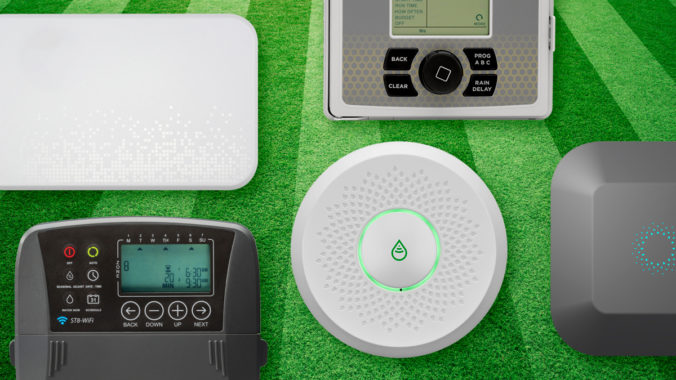Do you have a sprinkler system already? While there are a few smart irrigation controllers that will work with garden hoses or other off-the-rack equipment, most are designed to work with true irrigation controllers that connect to their own water supply and which feature motorized valves and dedicated tubing to control the flow of water. Installing a real sprinkler system can be a big task that requires professional help—particularly if you have a large yard or garden—but upgrading to a smart controller from a “dumb” one isn’t difficult. Consult with a landscaping expert first if you are installing a sprinkler system from scratch, in order to plan out your zones in advance.
On-device controls:Probably the biggest single decision you need to make with a controller is whether you want a device that includes onboard controls, i.e., buttons and a readout directly on the controller that allow you to use it without an app. This can be handy if you have multiple people using the system or, especially, want to give a gardener access to the controller without having to set him or her up on the app. Systems without on-device controls generally lack any kind of display whatsoever except for a status light indicating whether it’s working, so remember you’ll need the app on your smartphone or tablet to do anything with it.
Indoor/outdoor mounting: Are you mounting the unit inside or outside? If outside, you’ll need a weatherproof enclosure for the system. Some vendors sell separate indoor and outdoor versions of their controllers. Others sell an outdoor enclosure as a separate add-on.
Number of zones: In irrigation parlance, a zone is an area controlled by a valve and its connected irrigation tubing. If you have four valves, you have four zones. Your controller needs to have enough capacity to support all the zones in your system. Eight zones is common, but units supporting as few as six zones and as many as 16 zones are currently on the market.
Scheduling flexibility: How often do you want to water? Every day? Every other day? On specific days of the week? Not every controller can handle complex schedules, so look closely at your options before buying. A few controllers can even import legal watering restrictions information for your zip code, to ensure you aren’t watering on prohibited days.
Notifications: It’s helpful to be notified when your watering system is running, but different products deal with the mechanics differently. Push notifications are common, but many only notify you when the watering has completed, not when it starts (which is arguably more useful). Other forms of notification (email, text) aren’t common, so consider a unit that supports IFTTT if you want to get fancy with notifications.
“Smart” scheduling: Once of the great promises of smart watering systems is that they can take into account your local weather and environment to optimize your water delivery. We’ve found that these don’t work all that well (they have a tendency to over-water), though options that skip watering when it rains can be a bonus feature. Otherwise, there’s not too much of a need to put weight on so-called “smart” scheduling features.
